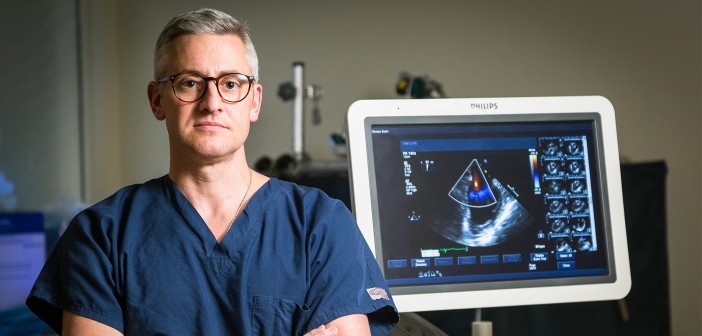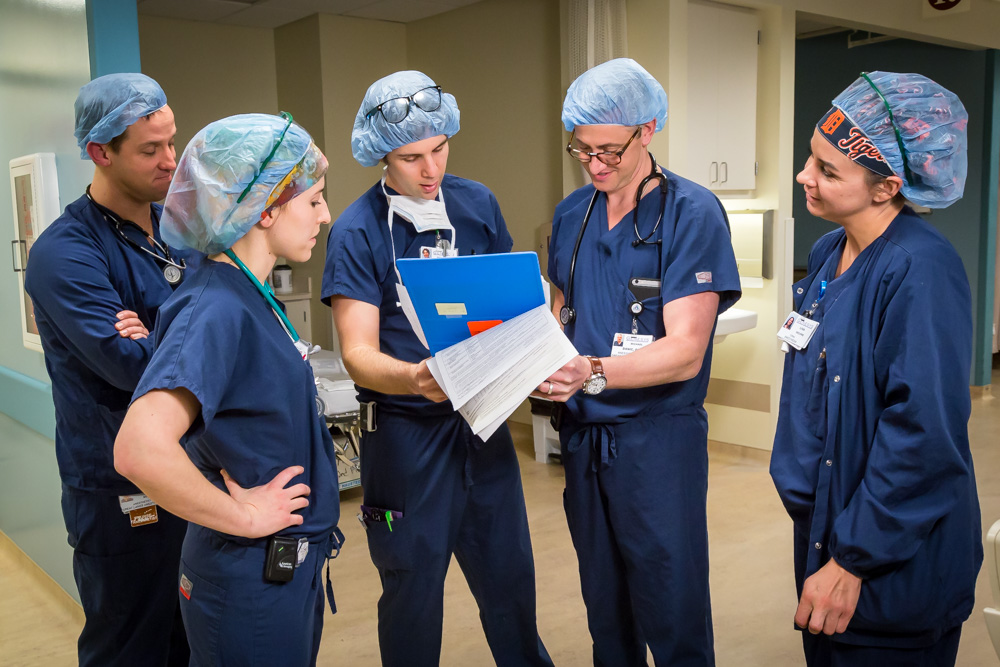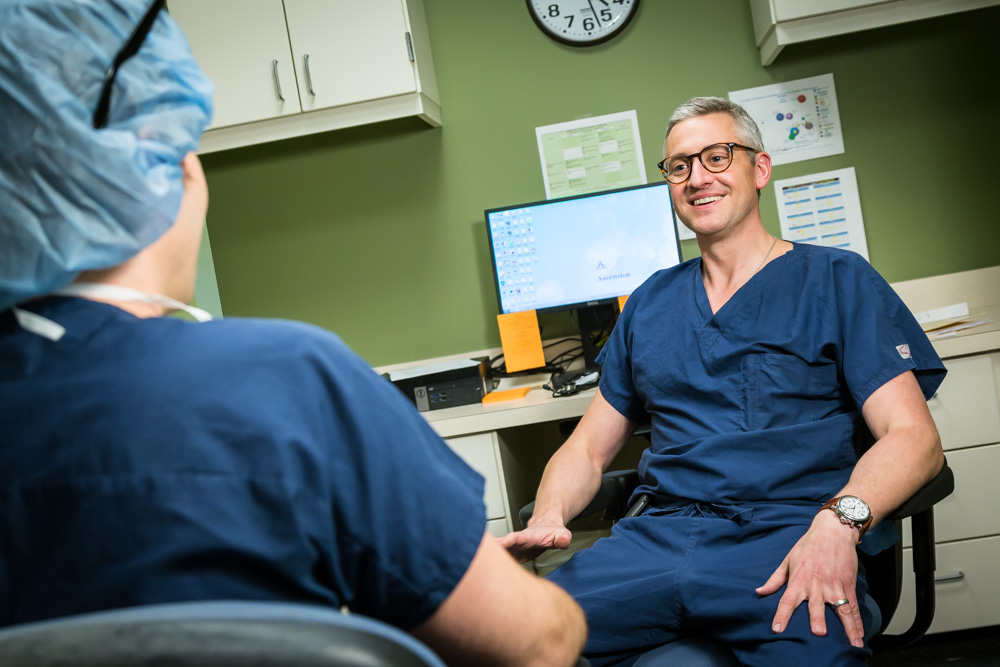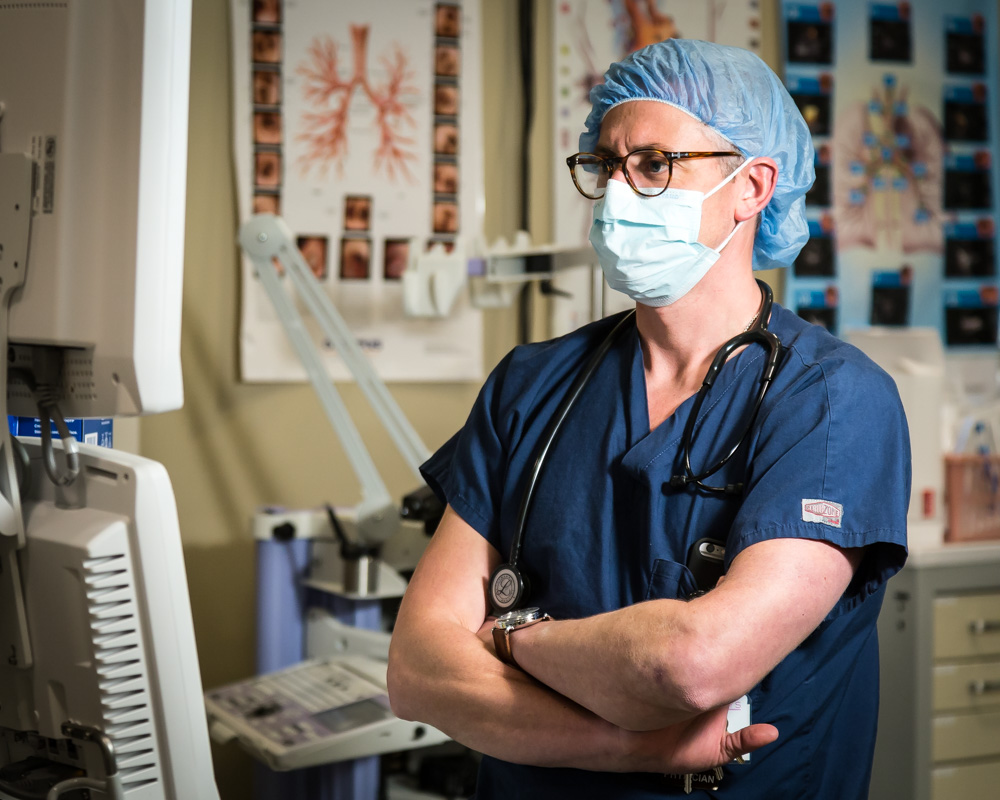Dr. Michael Danic is an anesthesiologist with American Anesthesiology of Michigan. For the last ten years, he has been an affiliate of Genesys Regional Medical Center, where he is now the chairperson of the Department of Anesthesiology.
The doctor typically works a ten-hour day, five days per week, and is on call about once a week and every third weekend. But, the thoughtful doctor is quick to point out that he does not work alone. The physicians and Certified Registered Nurse Anesthetists (CRNAs) work as a team in the operating room. “Teamwork is what it’s all about in my department. We provide anesthetic services throughout the hospital,” he says. The Anesthesiology Department consists of more than 60 physicians and CRNAs. MCM met up with Dr. Danic to chat about his typical day on the job.
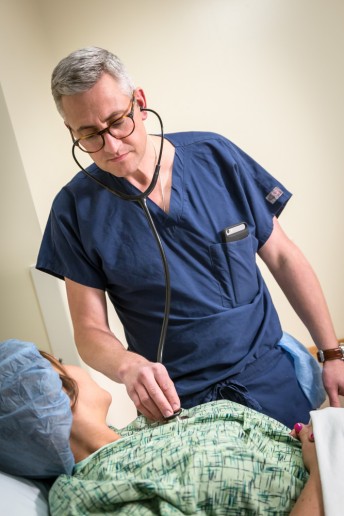 6am
6am
The first thing Dr. Danic does is review the OR schedule and notes where the patients are located. A variety of surgeries are performed in 23 operating rooms, ranging from heart surgery and neurosurgery, to orthopedic and general surgery, to name a few. “I particularly enjoy cardiac surgery,” he says.
6:30am
Every day, Dr. Danic attends a one-hour co-management meeting of surgeons, anesthesiologists and administrators to work on improving the quality of patient care. They discuss patient outcomes and experiences and from that, look to enhance perioperative and postoperative care.
7:30am-?
Dr. Danic speaks with the patients scheduled for surgery for about five to ten minutes, which he describes as one of the most stressful times in their lives. General anesthesia is often scary for the patient, as they are losing consciousness. “They have to trust me,” he says, “and it’s important to make personal contact and for the patient to know that our team is worthy of their trust.” Greeting family members is also very important, and he makes physical contact with a handshake. “Talking to patients during this stressful time is the reason I went into anesthesia,” he admits. He assesses the patient’s medical history, how it relates to the surgery and whether there is any increased risk for complication. He also looks at results of any pulmonary and cardiovascular tests and does an airway exam.
Next on the agenda is a discussion of each case with the CRNAs and surgeons who have also evaluated the patient. “Communication is really important,” says the doctor, “Together as a team, we determine the best plan for each patient. We work together every day. I rely on the CRNAs and I hope they rely on me. We also communicate with the surgeons to make sure we’re all on the same page for the procedure.”
Dr. Danic cites three main considerations with regard to anesthesia: amnesia (the patient remembers nothing), analgesic (the patient feels nothing) and immobility (there is no unintentional movement). “Anesthesia is much more than just putting a patient to sleep; it is inducing a coma while making sure the patient is breathing and has stable cardiovascular function.” Anesthesia can be administered in many ways — through breathing tubes (intubation), deep sedation, nerve blocks, spinals, and epidurals. The type to use is determined with input from the patient, CRNA and surgeon. “This is why communication is so important,” says the doctor.
Surgeries continue throughout the day, non-stop, reports Dr. Danic. The team is also responsible for all departments of the hospital when needed in emergency situations, such as a Code Blue. “Any time there is an emergency, the anesthesia team is there,” Dr. Danic reports. “We cover the whole hospital.” Additional staff (floaters) are also on hand for emergencies and to help in unexpected cases.
3:30pm
While surgeries are typically scheduled to end around 5:00pm, the team works until all of the surgeries are complete, so there is really no quitting time for the day. “We are basically there until all patients are out of the OR,” he says. “There are many days when we have to stay late. We are there to take care of the patients. We go home when they’ve all been taken care of.”
According to Dr. Danic, patient safety is their No. 1 priority. “The one thing that all humans share is consciousness,” he says. “We take away their consciousness and then, bring them back. It’s our priority that it’s done safely.”
What does Dr. Danic like best about his chosen profession? “It has helped me grow spiritually,” says the doctor, a self-professed devout Catholic. “It’s not about me; it’s about serving others. The people I work with every day help me grow. My profession has allowed me to work with a variety of patients — from pediatrics to geriatrics, cancer to cosmetics, tonsil patients to traumas. Every day is an opportunity to serve a patient in a different way.”
After Work
For years, Dr. Danic commuted from his home in Detroit but moved to Flint two years ago, in order to have more time with his family. He and his wife, Christa, have two children: Lucas and Isabella. He enjoys coaching soccer and basketball and watching Bella ice skate. “We have a lot of activities to go to – it’s non-stop,” he says with a smile. The Danic family is happy in their community. “The kids love it here, especially their school, St. Pius X. This area is full of sincere individuals, and there are many great people in Flint.”
The busy doctor is also active in the community by serving on the Board of Trustees at Powers Catholic High School, and is involved with Families Against Narcotics. “It’s an honor to serve patients and the community. In this profession, I get to do both.”
Photography by Eric Dutro

